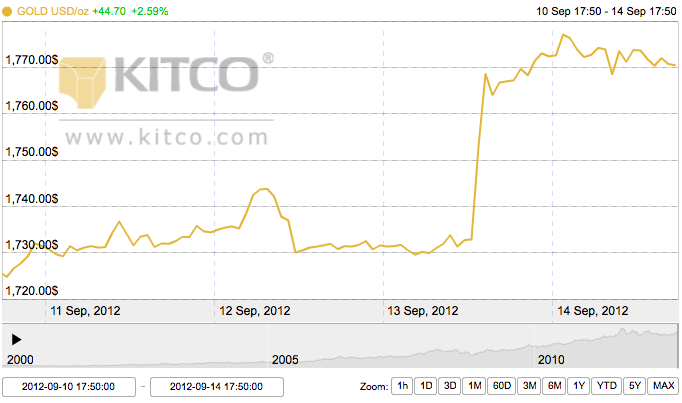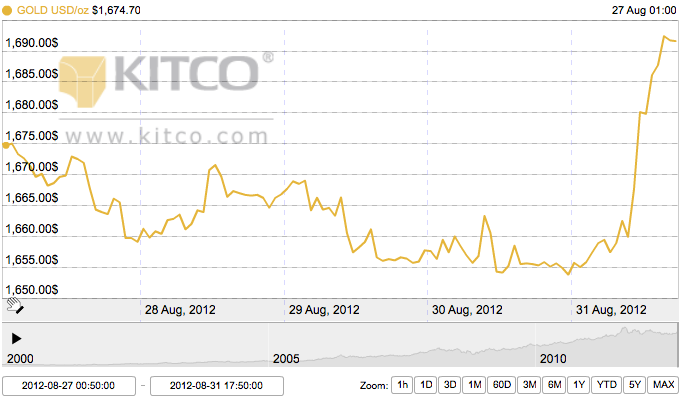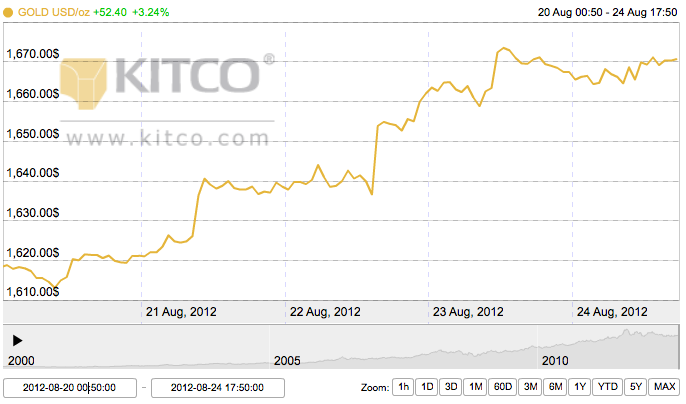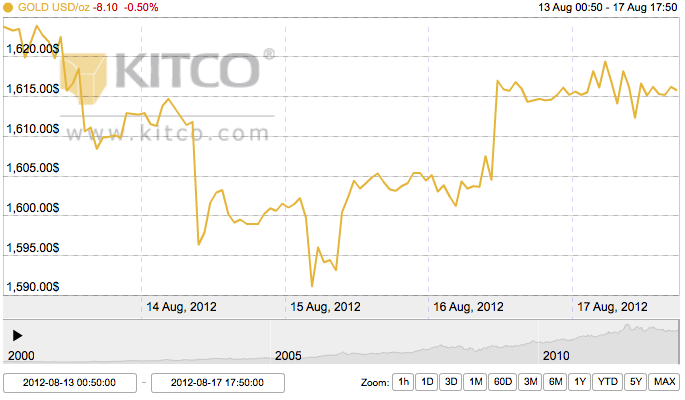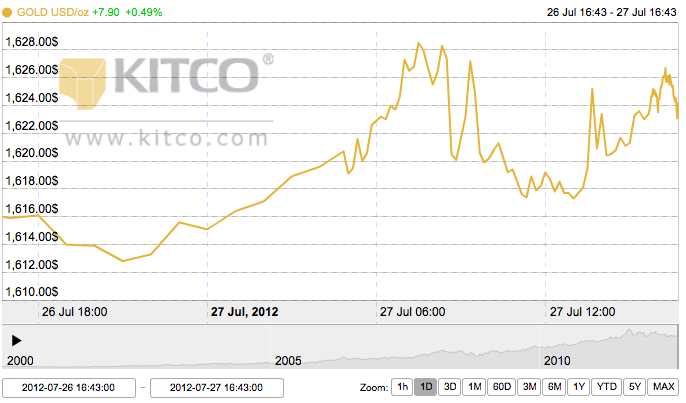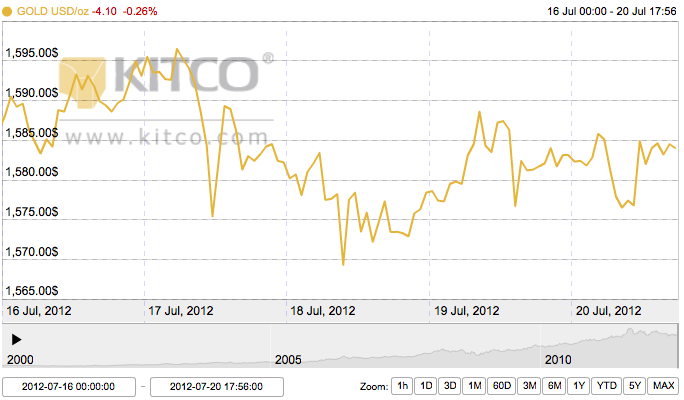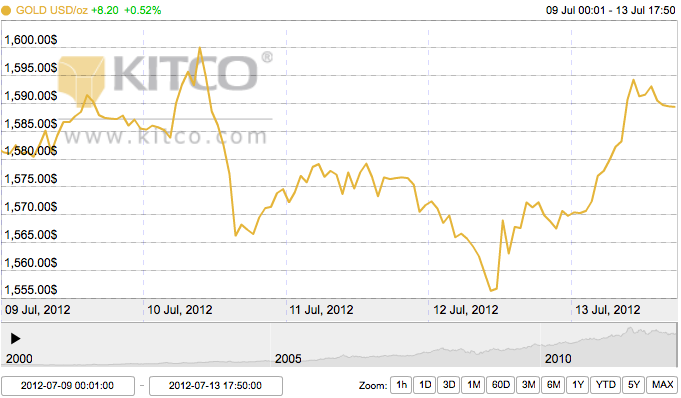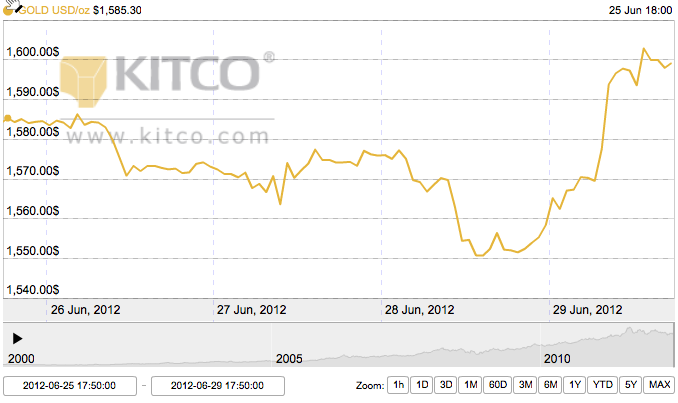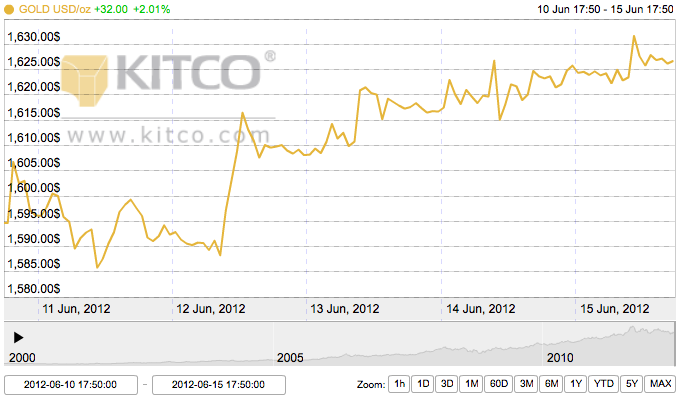Monday Open: $1,725.80
Weekly High: $1,777.10
Weekly Low: $1,724.80
Friday Close: $1,770.50
This week followed a bullish trend for gold since about a month ago when Federal Reserve Chairman Ben Bernanke gave solid indication he would instate quantitative easing. Gold bugs have been waiting for further news on monetary policy, and this week revealed the Fed’s plan to the delight of gold investors. After the doldrums of summer, during which gold started to dip below its previous holdings, gold is finally seeing a tremendous upsurge.
Last week gold hit a six month high, and this week saw gold shoot up another $30 to close just a third of the way below the $1,800 mark, a long way from when gold was hovering around $1,550 in the earlier summer months. Many believe $1,800 is just around the corner, and that 2012 could set the next record for gold’s highest price by catapulting it above $2,000.
Monday opened a bit softly after Friday’s reports of unemployment data and Fed expectations, but hit a solid stride mid-week and jumped drastically on Thursday after Bernanke finally revealed the Fed’s newest financial policies. The entire week, and month in fact, had been building up to Bernanke’s Thursday afternoon address at the third quarter FOMC meeting.
On Thursday, the Fed revealed its plan to spend $40 million buying mortgage-backed dept until employment improved and inflation remained contained. After months of uncertainty, the Fed has shifted focus from price stability of the dollar to boosting employment statistics. Also, the Fed stated it would probably not raise interest rates (which are at historical lows) until 2015, and Operation Twist is a key part of the policy, which retains that the Fed will buy longer-term securities as shorter-term ones mature.
To sum up, this means that inflation could be on the near horizon, and even the possibility of a weaker dollar encourages people to flee to the safety net of gold. After Thursday’s news, the price of gold rose 2%. This is the third round of quantitative easing enacted by the Fed since the recession began in 2008.
“The Fed’s inflationary behavior should be bearish for the dollar in the long run and drive investors to seek protection via the gold market,” Jeffrey Sherman said, who is the commodities portfolio manager of DoubleLine Capital, a company with more than $40 billion in assets.
Historical trends and the time of the season make it very possible that gold could rise to even higher, unprecedented heights. Chief Executive of Newmont Mining Corp., the world’s second largest gold producer, Richard O’Brien told participants at the Denver Gold Forum that $2,000 was just around the corner.
In related news, the Republican party has been calling attention to the possibility of returning the U.S. to a gold standard in recent weeks.
